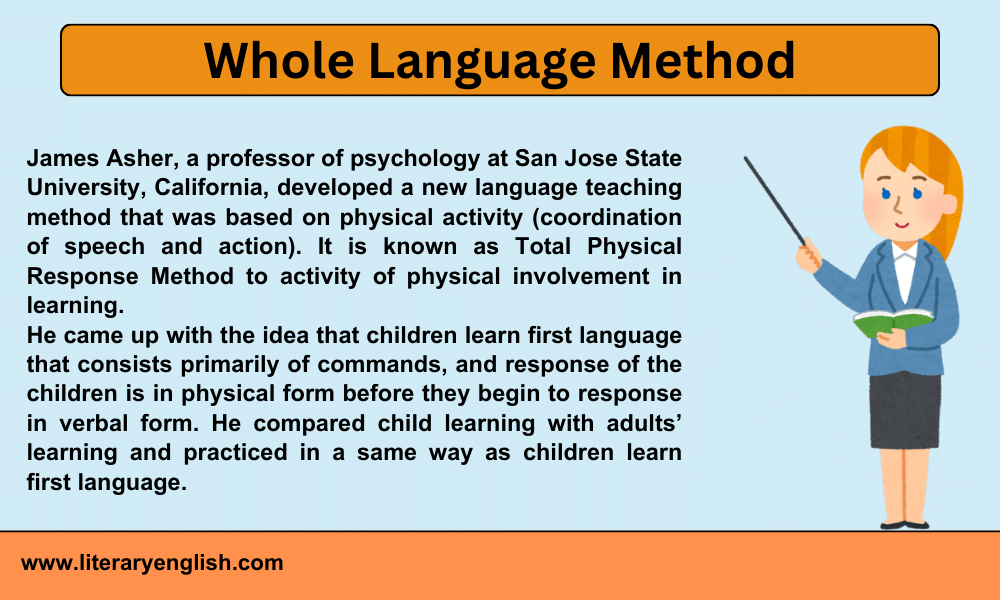Background of Whole Language Method
U.S. educators coined the term Whole Language Method for the first time in 1980s. This group of educators was concerned specifically with teaching of language arts (reading and writing in the mother tongue). Teaching of reading and writing in the first language is very common and popular academic discipline. It covers a variety of different methods and approaches. The reading and writing teaching approaches leads to learning that is divided into small segments such as grammar, pronunciation, vocabulary, and word recognition.
The Whole Language Method strongly opposes teaching of a language in form of small segments but it focuses that language should be taught as a “whole” instead of parts. “If language isn’t kept whole, it isn’t language anymore.” (Rigg, 1991, 522)
Objectives of Whole Language Method
The main objective of Whole Language Method is to involve real and practical instruction for teaching reading and writing in the classroom. Student should read real and authentic literature rather than specially prepared lesson and exercises. It also focuses on natural and real events rather than fabricated stories of fairies and heroes that never happen in real life. It primarily aims on student-centered learning.
Learner’s Activities in Whole Language Method
- Students read authentic literature rather specific academic syllabus
- Students write on natural events that happen in real life.
- Learners read real text of literature according to their own interest.
- Students read a piece of literature for the sake of comprehension.
- writing for a real audience and not simply to practice writing skills
- Students write at their own instead of teachers’ instruction.
- Learners learn to integrate reading, writing, listening and speaking skills.
- Sometime students write a text in partnership in different groups in a class.
Role of the Teacher
The role of the teacher is as a facilitator and an active participant in the learning environment rather than passing instruction only. The teacher generates different ideas to write a real and authentic text. He helps them to provide vocabulary and literature stuff to read. The teachers promote collaborative learning and assign group activities to accomplish mutual tasks. The teacher negotiates different strategies to cope with difficult tasks.
Role of the Learner
The learner is an active member of a collaborative learning environment. He bond mutual relations with other students, teachers and even with the writer of the text. Though, Whole Language Method is student-centered, so students are free to make a choice for reading a piece of literature or to write a text. Students select material according to their own ease and choice. “Choice is vital in a whole language class, because without the ability to select activities, materials, and conversational partners, the students cannot use language for their own purposes” (Rigg 1991, p. 526).
Material for Whole Language Method Class
The only material for WLM is real-world literature rather than commercial text books or notes. Students are free to make choice for selecting a material for class activity. There is no specific single book for a class but every student can read a different book according to his reading interest. Students can bring any material in the class like newspapers, storybooks, signs, handbills, and other printed materials. Teacher can suggest different reading material from real literature. Students also produce their own materials.
